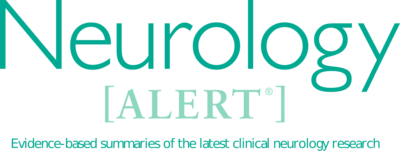
Neurology Alert – October 1, 2025
October 1, 2025
View Issues
-
Increased Treatment Opportunities for Trigeminal Autonomic Cephalalgias
Trigeminal autonomic cephalalgias (TACs) include cluster headache, paroxysmal hemicrania, hemicrania continua, short-lasting unilateral neuralgiform headache with conjunctival injection and tearing, and short-lasting unilateral neuralgiform headache with cranial autonomic symptoms. They are female-predominant primary headache disorders that coexist with migraines and mood disorders. Indomethacin is underused in those TACs that are specifically indomethacin responsive. Noninvasive vagus nerve stimulation for TACs is well-tolerated and more effective for prevention than as an acute treatment.
-
Intracranial EEG Activity and Consciousness in Frontal Lobe Seizures
Frontal seizures were classified as focal preserved consciousness (FPC), focal impaired consciousness (FIC), or focal to bilateral tonic-clonic (FBTC). Intracranial electroencephalogram (icEEG) recording was analyzed in those seizures. FPC seizures showed significant icEEG power increases in the seizure-onset region across frequency ranges, with smaller increases in other regions. FIC seizures demonstrated a significant increase in icEEG power not only within the seizure-onset zone but also across distal cortical regions. Widespread power increases also were noted in FBTC seizures. In addition, the power increase in FBTC is much greater compared to FIC seizures.
-
Repeated Head Impacts Are Associated with Tau Astrogliopathy
This study demonstrates that both traumatic brain injury and participation in contact sports are independently associated with increased tau astrogliopathy, particularly thorn-shaped astrocytes, even when cases of chronic traumatic encephalopathy neuropathologic change are excluded.
-
Potential Benefit of Glyburide in Moderate-Volume Acute Ischemic Stroke
An exploratory analysis of the CHARM trial suggests intravenous glyburide may improve outcomes in large hemispheric stroke patients with infarct volumes < 125 mL, particularly alongside thrombectomy, reducing edema, mortality, and the need for decompressive surgery, and highlighting a potential neuroprotective role.
-
Plasma Exchange for Relapses in MOGAD
In this multicenter, international study of a cohort of patients with myelin oligodendrocyte glycoprotein antibody-associated disease (MOGAD), the authors examined the effectiveness of plasma exchange for acute relapses and reported favorable disability outcomes but found that advanced age and delayed initiation of the treatment reduced its benefit.